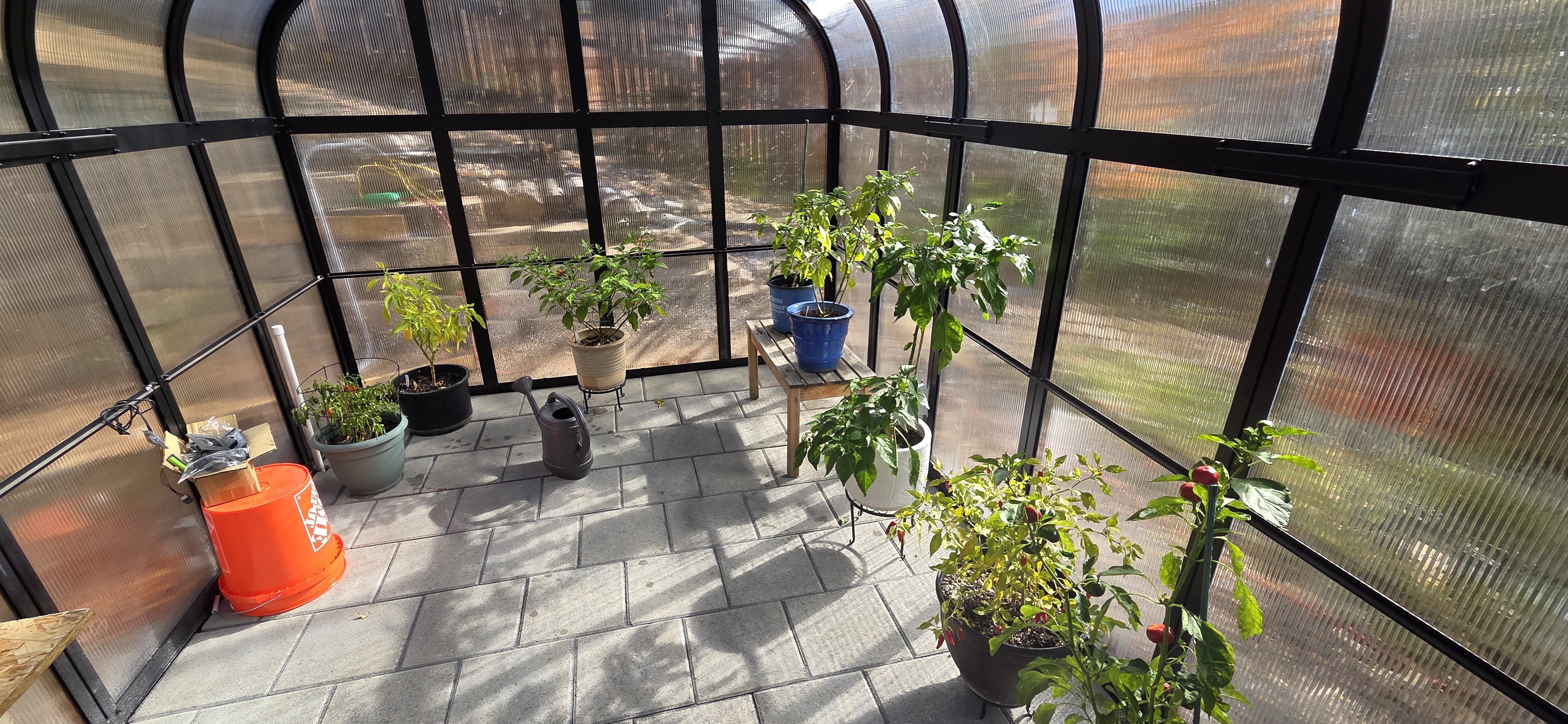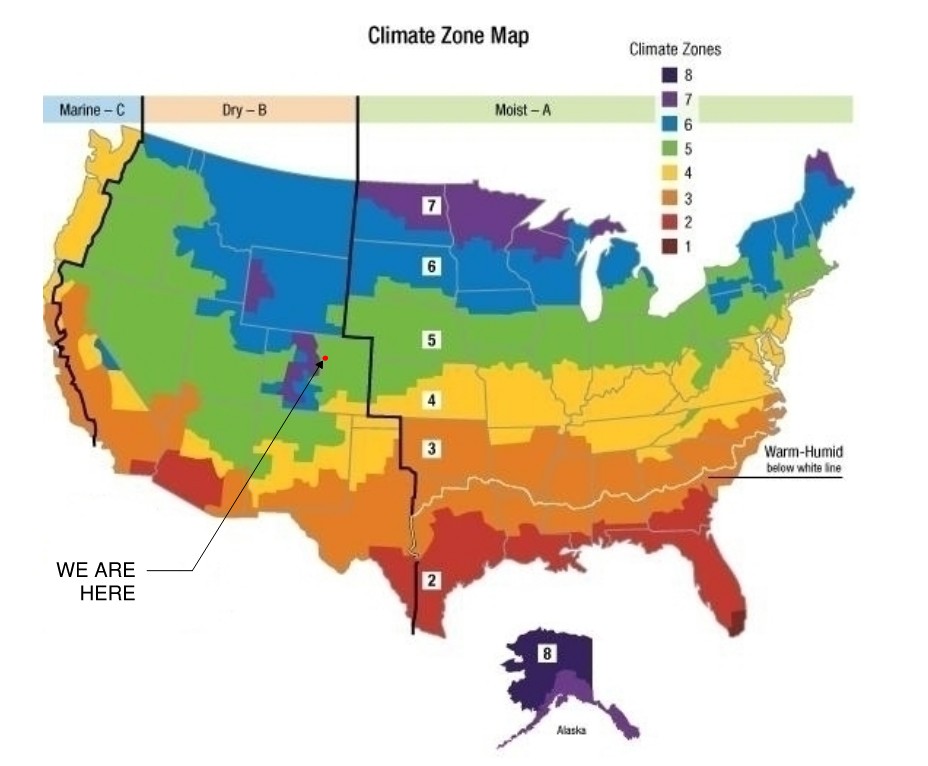Greenhouse
Stuff
Check out all of our current greenhouse data, photos, and more.
Click the buttons to see the most recent temperature data.

Our goal for the 2025-2026 winter is monitor the greenhouse temperatures and attempt to keep a few of our favorite plants alive until next spring.
Winterizing a small greenhouse involves preparing it to withstand cold temperatures and protect plants during the winter months. Start by sealing any gaps or cracks in the structure to prevent drafts and heat loss. Insulate the greenhouse with materials like bubble wrap or thermal blankets to maintain a stable internal temperature. Ensure the ventilation system is adjustable so you can manage humidity and airflow without compromising warmth. Additionally, clean the gutters, check the heating system (if applicable), and consider adding a layer of mulch or frost cloth around plants to provide extra protection against freezing temperatures.

The USDA Plant Hardiness Zone Map divides the U.S. into regions based on average annual minimum temperatures, helping gardeners determine which plants are most likely to thrive in their area. In Colorado, which spans several zones (from 3b to 7a), gardeners face significant challenges when winterizing a greenhouse. The state's varying climate zones mean that while lower elevations may experience milder winters, higher altitudes endure extreme cold, making temperature control a critical concern. Greenhouses in colder zones require additional insulation, heating, and often supplemental lighting to protect plants from freezing temperatures and limited sunlight, adding complexity and cost to winter operations.
Sensor 1 uptime past 24-hours is 72.22%Sensor 2 uptime past 24-hours is 99.86%
Outside uptime past 24-hours is 100.00%
750W Heater is OFF
1500W Heater is OFF